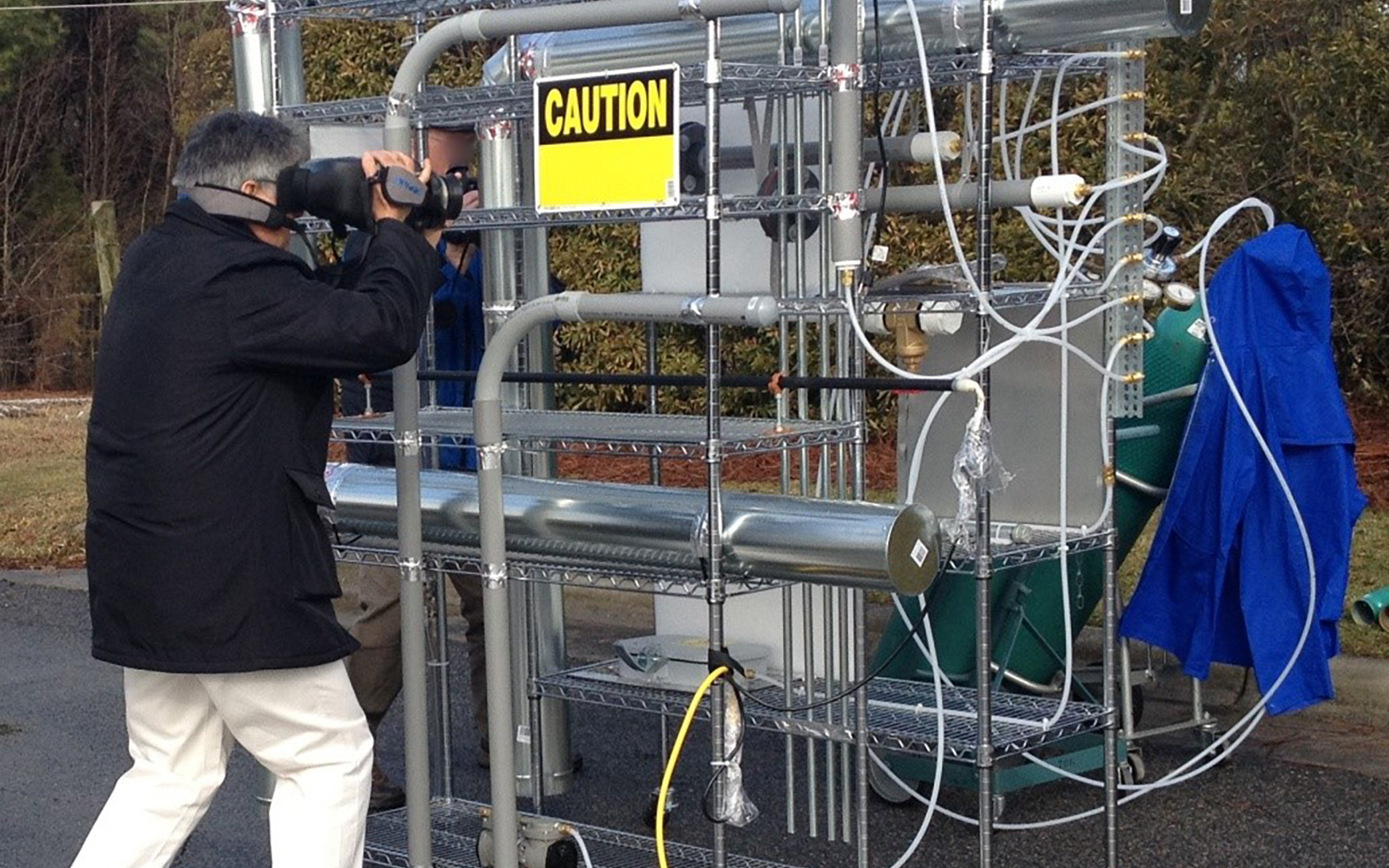Developing Optical Gas Imaging Protocols

Project Brief
The Challenge
Numerous industrial sources emit leaks and other fugitive hydrocarbon gas plumes that are typically invisible to the eye. Because optical gas imaging cameras can make these gas emissions visible, they provide a potentially helpful tool for facility operators trying to maintain compliance with fugitive emissions regulations. The U.S. Environmental Protection Agency asked ERG to objectively evaluate OGI technology to inform policy and regulatory decision-making related to OGI use.
ERG's Solution
First, ERG conducted laboratory and field experiments to characterize the operational uniformity and performance of different commercially available OGI cameras and camera operators. For example, we tested factors that may convolute the clear imaging of fugitive gases—factors such as temperature, wind shear, leak pressure, gas species, and operator experience and technique. To test these factors, we designed a non-reflective temperature-controlled background, various leak configurations, and a controlled leak generation system. We also designed an industrial leaking platform to assess operators’ ability to readily identify leaks using OGI, and we applied a custom-designed spectral testing platform to test spectral response on multiple OGI cameras. We then used the resulting data to establish the spectral properties and gas sensitivity of OGI camera technology. Finally, based on the results of this work, ERG developed EPA’s field application protocol for OGI camera technology as a Technical Support Document.
Client
U.S. Environmental Protection Agency